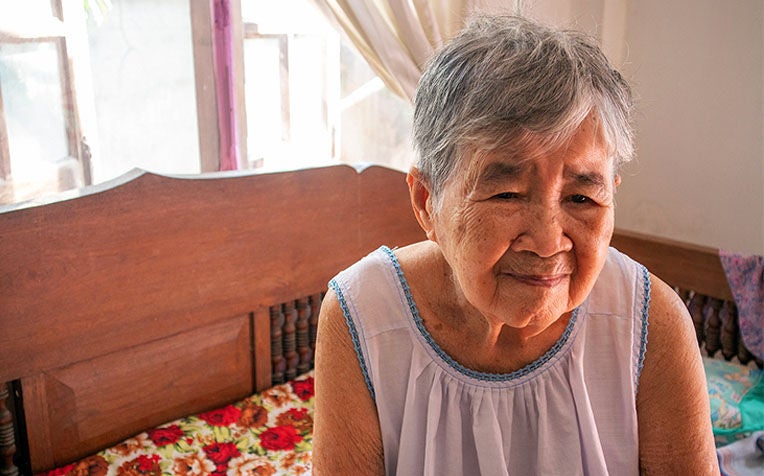
Sundowning (or sundown syndrome) makes those with dementia become more confused and insecure from late afternoon onwards, and can continue until at night.
Behavioural changes in persons living with dementia can occur as a result of changes in their brain.
The Department of Psychological Medicine from Changi General Hospital (CGH), a member of the SingHealth group, explains the common symptoms displayed by persons with dementia and offers caregivers tips on how to better manage these behaviour changes when caring for their loved ones with dementia.
Sundowning (sundown syndrome) in persons with dementia
Sundowning (also known as sundown syndrome) is a condition that describes persons with dementia becoming more confused, restless or insecure in the late afternoon which may continue until the night.
They may be more demanding, agitated, restless, upset, suspicious or disoriented, and may even hallucinate.
11 Tips to manage sundowning (sundown syndrome) in persons with dementia
1. Let your loved one enjoy the sun!
Provide exposure to sunlight (e.g., engage in outdoor activities from 7am to 9am) as this helps to set the circadian cycle of the person with dementia.
2. Restrict your loved one's caffeine intake
For persons with dementia, monitor and restrict his/her intake of caffeinated food and beverages to an earlier time of the day, such as in the morning or late morning.
3. Help the person with dementia cultivate healthy habits
Maintain a regular meal and bedtime schedule as much as possible.
4. Avoid letting your loved one get restless
Schedule exercises or activities to expend their energy during the day, but not to the point of exhaustion.
5. Discourage your loved one from taking naps during late afternoon.
However, if napping is unavoidable, keep it to a maximum of 30 minutes.
6. Try keeping late afternoons and evenings free of stressful activities for your loved one
Avoid appointments, bathing, travelling or any other stressful activities in the late afternoon or evening.
7. When approaching late afternoon or evening , keep your loved one in a calm, peaceful setting
Create a calm and soothing atmosphere before the symptoms of sundown syndrome begin to appear.
8. Simple and familiar is good for persons with dementia
Engage them in a simple and quiet activity. Activities that are familiar to them from their earlier days may be helpful.
9. Come sunset, draw the curtains and turn on the lights
If your loved one with dementia is living with you, close the curtains and provide adequate lighting to lessen shadows when it begins to get dark.
10. Avoid restraining your loved one unless absolutely necessary
Refrain from restraining the person with dementia if possible.
11. Note down instances of sundowning (sundown syndrome)
Keep a record of the timing when sundown syndrome usually occurs. Take note of its frequency and duration as well, to show doctors/nurses so they can advise accordingly or adjust medications.
For more tips on how to manage sundowning (sundown syndrome),
read this article.
Plus, watch this video on caregiver coping tips for sundown syndrome.
Possible reasons for sundowning (sundown syndrome) in persons with dementia
End-of-the-day fatigue can lead to an inability to cope with stress.
Reduced lighting and increased shadows can create confusion and hallucinations as common objects may look different under poor lighting. This is possible especially if the person with dementia has poor vision.
For persons with dementia, their circadian cycle (the body’s natural sleep and wake pattern) can be deranged as a result of their condition – i.e., the person is unable to distinguish between day from night.
A lack of structured activities in the late afternoon can lead to restlessness later in the day.
About BPSD (Behavioural and psychological symptoms of dementia)
Behavioural and psychological symptoms of dementia (BPSD) are neuropsychiatric symptoms and behaviours displayed by persons with dementia.
These symptoms constitute a huge aspect of dementia irrespective of its subtype, and they demonstrate a strong correlation with the degree of functional and cognitive impairment.
Learn how to manage anger and aggression, click here.
Learn how to manage apathy, click here.
Learn how to manage inappropriate (disinhibited) behaviours, click here.
Learn how to manage hallucinations, click here.
Learn how to manage paranoia and delusion, click here.
Learn how to manage repetition (repetitive behaviour),
click here.
Learn how to manage wandering behaviour, click here.
Ref: H24


















 Get it on Google Play
Get it on Google Play